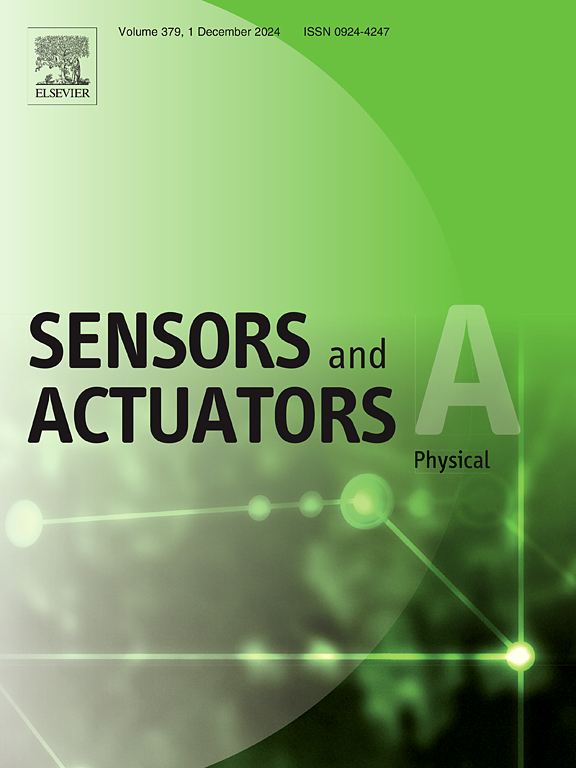综述:基于光纤传感器的盐度和温度测量
IF 4.1
3区 工程技术
Q2 ENGINEERING, ELECTRICAL & ELECTRONIC
引用次数: 0
摘要
研究光纤盐度和温度传感器对于加强精确的环境监测和确保生态系统的可持续性至关重要。传感器的性能与其结构密切相关,后者对灵敏度和稳定性有重大影响。传输模式类型、传感材料选择和结构设计等因素都会影响传感器的检测灵敏度和稳定性。根据对盐度和温度的灵敏度,光纤传感器可分为本征传感器和外征传感器。本综述全面分析了本征和外征传感器的结构设计、工作原理和性能特点,重点介绍了各种材料和结构在光纤传感器设计中的应用和潜力。它探讨了聚酰亚胺和水凝胶等新兴材料如何提高传感器的灵敏度、准确性和稳定性,并研究了光子晶体光纤、空芯光纤和超细纤维等单模和多模传输在具体应用中的优势和性能。该综述旨在启发人们在设计新型光纤传感器时使用先进材料和创新结构,从而进一步提高其性能和应用前景。本文章由计算机程序翻译,如有差异,请以英文原文为准。
A review: Salinity and temperature measurement based on optical fiber sensors
The study of optical fiber salinity and temperature sensors is essential for enhancing precise environmental monitoring and ensuring the sustainability of ecosystems. Sensor performance is closely linked to their structure, which significantly influences sensitivity and stability. Factors such as transmission mode type, sensing material selection, and structural design all affect the sensor's detection sensitivity and stability. Based on sensitivity to salinity and temperature, optical fiber sensors are classified as intrinsic and extrinsic sensors. This review provides a comprehensive analysis of the structural design, operational principles, and performance characteristics of both intrinsic and extrinsic sensors, focusing on the application and potential of various materials and structures in optical fiber sensor design. It explores how emerging materials, including polyimide and hydrogels, can enhance the sensitivity, accuracy, and stability of sensors, and examines the advantages and performance of single-mode and multimode transmission, such as photonic crystal fibers, hollow-core fibers, and microfibers, in specific applications. The review aims to inspire the use of advanced materials and innovative structures in designing new optical fiber sensors, thereby further improving their performance and application prospects.
求助全文
通过发布文献求助,成功后即可免费获取论文全文。
去求助
来源期刊

Sensors and Actuators A-physical
工程技术-工程:电子与电气
CiteScore
8.10
自引率
6.50%
发文量
630
审稿时长
49 days
期刊介绍:
Sensors and Actuators A: Physical brings together multidisciplinary interests in one journal entirely devoted to disseminating information on all aspects of research and development of solid-state devices for transducing physical signals. Sensors and Actuators A: Physical regularly publishes original papers, letters to the Editors and from time to time invited review articles within the following device areas:
• Fundamentals and Physics, such as: classification of effects, physical effects, measurement theory, modelling of sensors, measurement standards, measurement errors, units and constants, time and frequency measurement. Modeling papers should bring new modeling techniques to the field and be supported by experimental results.
• Materials and their Processing, such as: piezoelectric materials, polymers, metal oxides, III-V and II-VI semiconductors, thick and thin films, optical glass fibres, amorphous, polycrystalline and monocrystalline silicon.
• Optoelectronic sensors, such as: photovoltaic diodes, photoconductors, photodiodes, phototransistors, positron-sensitive photodetectors, optoisolators, photodiode arrays, charge-coupled devices, light-emitting diodes, injection lasers and liquid-crystal displays.
• Mechanical sensors, such as: metallic, thin-film and semiconductor strain gauges, diffused silicon pressure sensors, silicon accelerometers, solid-state displacement transducers, piezo junction devices, piezoelectric field-effect transducers (PiFETs), tunnel-diode strain sensors, surface acoustic wave devices, silicon micromechanical switches, solid-state flow meters and electronic flow controllers.
Etc...
 求助内容:
求助内容: 应助结果提醒方式:
应助结果提醒方式:


